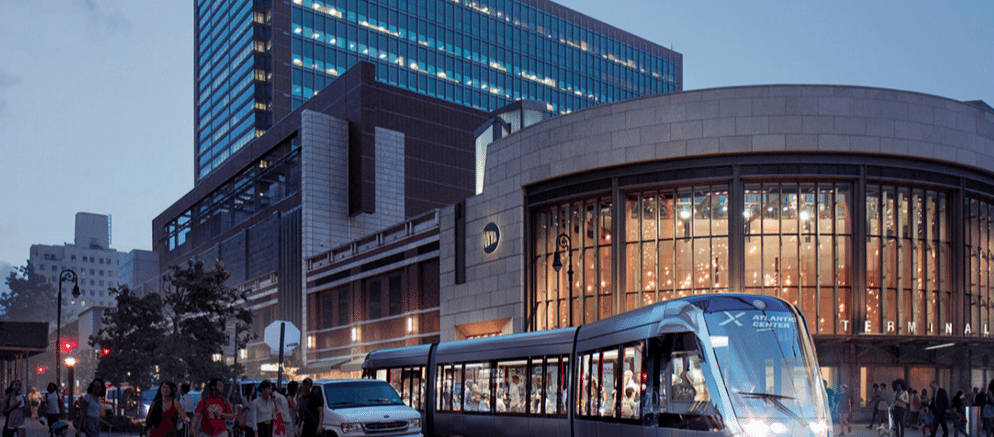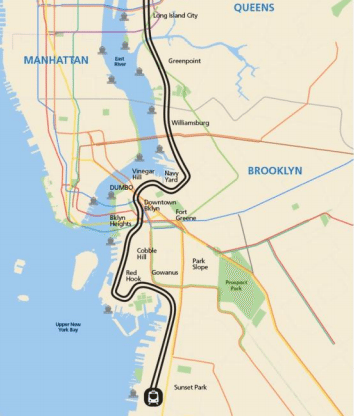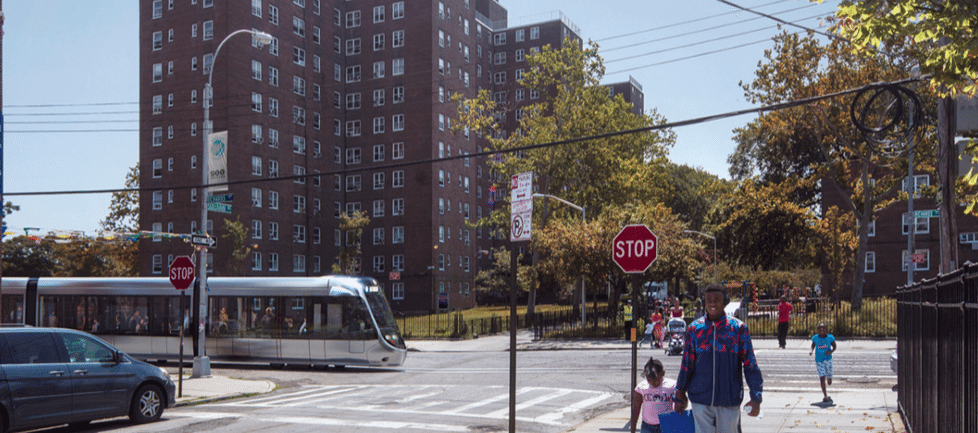Light Rail Line May Not Have Moved Forward Without Support From Developers, Daily News Says


An investigation by the Daily News is charging that the de Blasio administration initiated the planning of the BQX Connector streetcar line after several developers with projects on its possible route gave cash to a non-profit fund affiliated with the mayor.
The Daily News reports that seven developers donated a total of $245,000 to Mayor de Blasio’s now-defunct Campaign for One New York, prior to his February 2016 announcement that the City planned to build the 16-mile, $2.5 billion BQX Connector. The new streetcar will run parallel to the waterfront, from Astoria, Queens all the way down to Sunset Park, Brooklyn.
The BQX is supposed to be operational by 2024. The last light rail line in New York City — one of Brooklyn’s many streetcars — stopped running in 1956.
In Brooklyn, the BQX connector will pass through — or near — Greenpoint, Williamsburg, Fort Greene, the Navy Yard, Vinegar Hill, DUMBO, Brooklyn Heights, Downtown Brooklyn, Cobble Hill, Gowanus, Red Hook and Sunset Park. The City maintains that increased property values along its route will generate sufficient tax revenue to pay for the line’s construction.
The de Blasio administration estimated last month that the BQX annual operating costs will be $30 million, but that the streetcar line will create $25 billion in economic gain over the next 30 years through new construction jobs, small business growth and tax revenue.
The Daily News says that the following developers/landowners donated to the Campaign for One New York in the first half of 2015, and that all stand to benefit from the access provided by the BQX. Steiner Studios was the apparent exception, making its donation this January.
- Jed Walentas, Two Trees Management, Domino Sugar Factory multi-use project, donation: $100,000
- Park Tower Group, co-developer with Brookfield Properties of Greenpoint Landing housing complex, donation: $50,000
- Brookfield Properties, co-developer of Greenpoint Landing complex, donation: $50,000
- Toll Brothers, Pierhouse hotel and condos at Brooklyn Bridge Park, donation: $25,000
- RAL Development, builder of two “luxury and affordable housing towers” on Furman St. in downtown Brooklyn, donation: $10,000
- Alma Realty, Astoria Cove complex, donation: $5,000
- Steiner Studios, located near a possible BQX stop at the Brooklyn Navy Yard, donation: $5,000
The News also reports that Walentas has been a major advocate for the BQX since 2014, and that he created a nonprofit called Friends of the Brooklyn Queens Connector in February, 2015. Walentas made his $100,000 donation through a limited liability corporation, which initially obscured his identity, the News claims.
The BQX is not just supported by developers, however. In addition to Walentas, Friends of the Brooklyn Queens Connector’s executive committee includes Jill Eisenhard of the Red Hook Initiative, Paul Steely-White of Transportation Alternatives, and Tom Wright of the Regional Plan Association.
Leadership from the Fifth Avenue Committee, Los Sures and Industry City sit on the group’s board of directors, in addition to representatives of property owners like Durst, Tishman Speyer and Steiner Studios.
“The plan Friends of the BQX submitted to the city had the trolley stopping at the doorsteps of seven major developments, including two spearheaded by Walentas — his DUMBO condo properties and Domino in Williamsburg. Most of these projects were far from subway stops, so a trolley would boost their property values,” the News states.
“As Walentas and Friends of the BQX began lobbying the de Blasio administration, owners of the developments along the route began writing checks to de Blasio’s Campaign for One New York.”
The de Blasio administration provided “high-level access to BQX backers,” the News adds, stating that Deputy Mayor for Economic Development Alicia Glen spoke with Walentas by phone and met with him in person during the lead-up to the City’s announcement that it would build the streetcar line.
As we reported in November, the Mayor’s Office released a report detailing possible routes for the BQX Connector.

According to planners, the BQX will have 30 or more stops, approximately ½ mile apart. The line’s peak hour schedule is supposed to be 5-10 minutes between arrivals. The price of a ride will be pegged to current MTA fares.
The BQX will help address poor access to mass transit in growing waterfront areas, the de Blasio administration argued in its November release, especially the need for North-South transit connections.
The new streetcar line represents a “shift from Manhattan-centric connectivity,” the City said, giving New Yorkers better access to “emerging” job hubs, and academic and cultural institutions in Brooklyn and Queens waterfront neighborhoods.
The area served by the BQX Connector is home to roughly 300,000 workers and 400,000 residents, the City reported, including 40,000 NYCHA residents across 13 developments. Over half of the BQX catchment area’s rental stock is “public, rent-stabilized, rent-controlled, or income-restricted.”

Depending on its final route, the BQX has the potential to provide access to 10 ferry stops, 30+ different bus routes, 15+ different subway lines, and 100+ CitiBike stations, the Mayor’s Office noted.
The City said that it was evaluating multiple routes through neighborhoods like Fort Greene, downtown Brooklyn, Red Hook and Sunset Park. Finalized routes will be announced early next year.
The City could connect the BQX to all seven of the donors’ developments through the routes it is considering, the Daily News observes. But the News acknowledges that several of the aforementioned donors had various projects under review by the City, with the implication being that they had more than reason to donate to a fund supported by the mayor.




